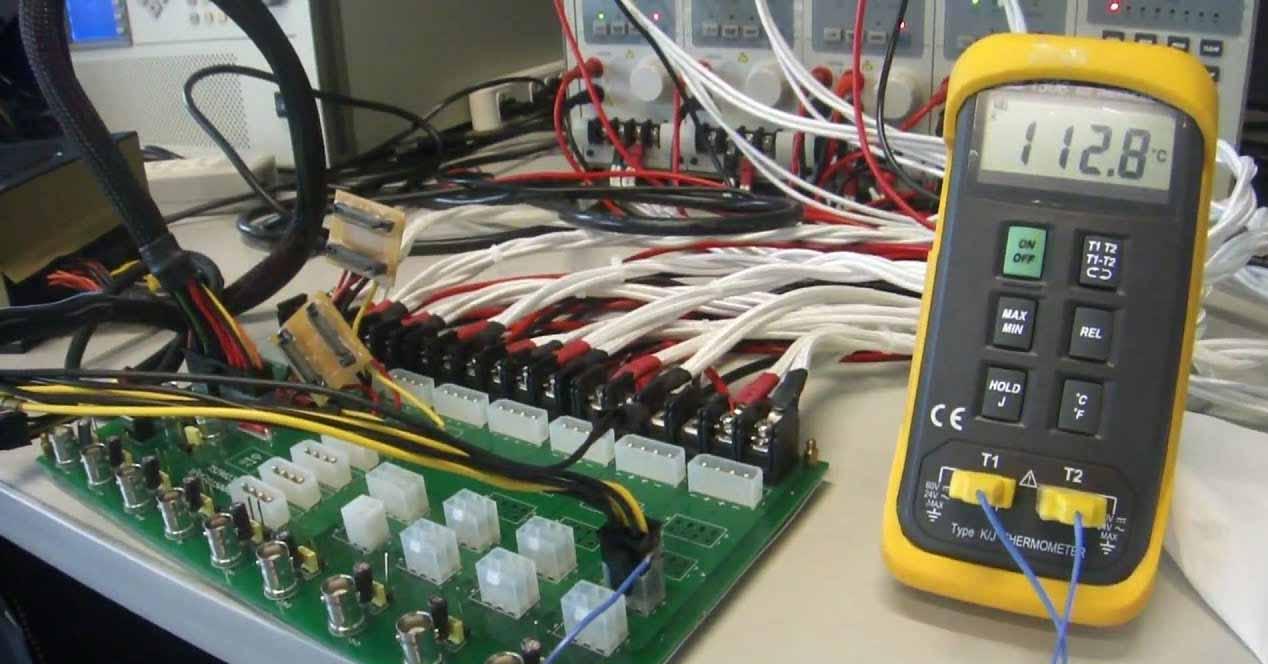In its day, components with chips like the processor or graphics card, or even logic circuits used a voltage of 5V to operate, while other components such as fans, sound cards or other items required 12V. Over the years, the clock speed of these chips has increased and with it the consumption, and yet, for example, the voltage of the processor has fallen to 3.3V. This means that the power supply had to be able to provide different voltages To be able to precisely meet the needs of the components, this is why the three different voltages used by a modern power supply have appeared: 3.3V, 5V and 12V.
12V lines in power supplies
To define what these voltage lines are in power supplies, the best way to do it is to do a comparison: imagine that simply the power supply is a converter that first turns the AC from the outlet into DC, because it is the one that the PC needs to function, then it transforms the tension which comes from the electrical outlet into tensions which the PC needs to function: 12V, 5V and 3.3V. In the past, negative voltages of -5V and -12V were also required, but in modern power supplies they have already disappeared because they have long since ceased to be necessary.
As the internal structure of a processor became smaller and smaller and operating speeds increased at the same time, the voltage of the heart decreased and eventually became variable. On the other hand, motherboards or graphics cards used their own built-in voltage regulators which only pulled the power they needed from the 12V lines of the power supply.
This means that over the years 12 V lines or rails have become the most important power lines for all the voltages a PC uses and even the power supplies that carry DC technology. / DC create their own 5V and 3.3V internally from the 12V line, which is why these rails are often referred to as “minor” and 12V “major” rails.
Do multi-lane fountains have an advantage?
In the field of 12V lines in power supplies, we can find models that have a single rail capable of delivering huge amperage, or models with multiple channels which provide lower amperage. Multi-channel sources have an exclusive OCP (Over Current Protection) for each of them, which is used to regulate the maximum current in each channel; This is a very useful function because, in addition to having better protection against short circuits and overloads in connected devices, it allows finer regulation of the voltage.
On the contrary, sources which have a design with a single 12V line do not have OCP protection per channel but only the generic of the source in general, thus increasing the risk of cables and components having problems; in turn, it delivers maximum power and a more even workload all the way, which is especially important for use with power-hungry graphics cards or if the processor is overclocked, for example.
Therefore, having a single 12V line or more has its advantages and disadvantages; You will always hear that for high performance systems it is better to use a single powerful 12V rail and it really is, but if your PC is not consuming a lot or your source is oversized you should use a source. with several rails for more safety.
How to check the voltage of the 12V rail?
Although power supplies have multiple filters and regulators to provide the most stable voltage possible, they do not always get too fine tuned as it is highly dependent on the system load. The best way, or at least the most reliable way to check the values it provides, is to go to the BIOS of the PC and in the section “Hardware Monitoring”, “PC Health Status” or similar (because it depends on the motherboard), you will see the voltages that the motherboard receives from the power supply.
The 12V voltage reading should always be between 11.8V and 12.4V and should be stable with little or no fluctuation. A slight fluctuation of 0.05 V is generally acceptable as long as it does not occur more than once every 10 to 15 seconds; a larger 0.1V fluctuation can be safe as long as it does not occur more than once per minute, while a fluctuation of more than 0.1V every 10 seconds or less could be an indication that the source is in trouble on the 12 V lines (note that in the BIOS the PC is completely inactive and there should be no fluctuation).
If you want to take these readings with the PC running and / or under load, you will need to resort to monitoring software such as Aida64, software capable of providing fairly reliable readings. It is common, in this case, for the fluctuations to be much larger and especially if you benchmark the PC or test it in a game; in this case, as long as the rail remains between the safety values, do not worry.










